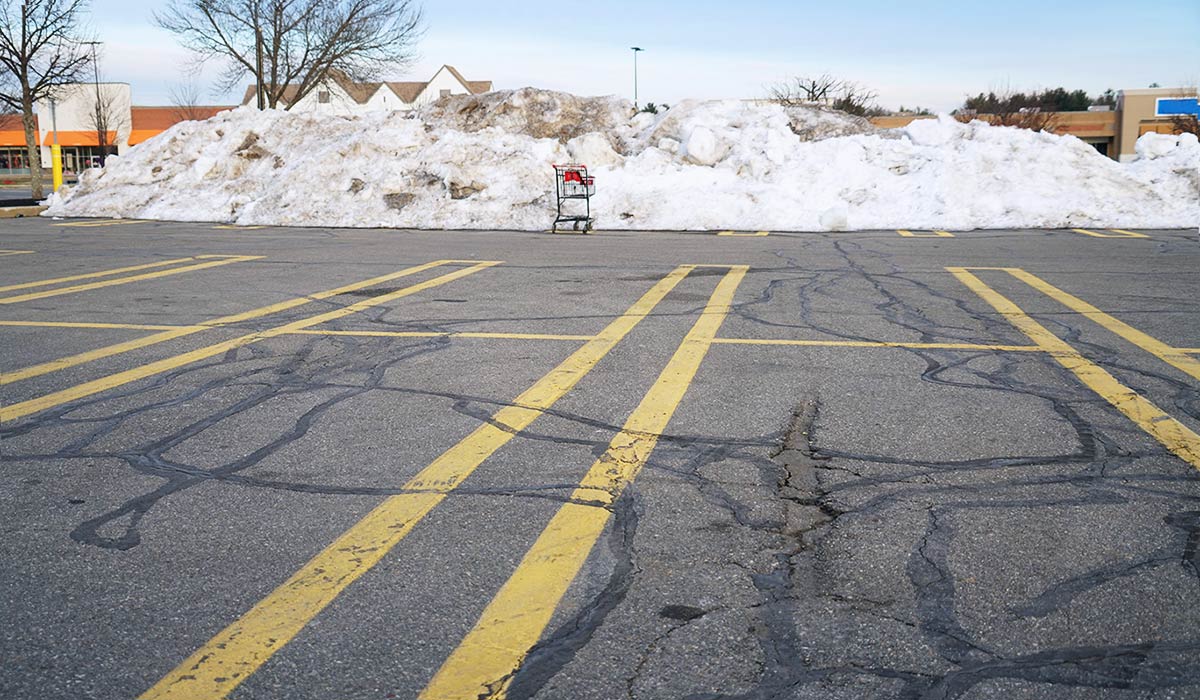Table of Contents
Trees contribute to curb appeal and property value. Additionally, they provide shade, which helps keep the surroundings cool, especially during summer months. Well-maintained trees and shrubs add beauty and appeal, while helping keep air fresh and clean. While these are some of the huge advantages of trees and plants, there are also downsides to having large trees in and around your driveways and parking lots.
As the trees grow, they can cause the asphalt to heave up and break. Since these gaps have jagged and uneven edges, they can become tripping hazards or cause damage to car tires or undercarriage. Tree root damage can lead to injuries and accidents if not handled in a timely manner.
FREE DOWNLOAD!

Get Work All Year Long:
Add Pothole Repair To Your Business
The best course of action is not to plant trees too close to the driveway or parking areas and to ensure that the tree roots can grow and spread in a downward direction by having non-compacted soil below the subgrade of paved areas. However, this is only applicable if the property is still under construction or if you are remodeling. Otherwise, you are stuck with full-grown trees that have already taken root – pun intended!
Here are some of our best tips and fixes in case you are starting to see cracks and other signs of damage on your pavement where trees are close by:
1. Remove small roots
If you already see places in your church parking lot or hotel driveway has been pushed up, chances are tree roots are already trying to snake their way out of these cracks. Fine roots may already be visible through the gaps. If this is the case, we recommend that you cut away the damaged portion of the pavement using an appropriate gas-powered asphalt and concrete saw. Visit our resource page on how to properly cut asphalt surfaces.
Once you have cut away the damaged sections, carefully trim the small roots all the way back to the tree. We also suggest installing a root barrier (see Tip #2) to prevent them from growing back. Once the small roots have been trimmed off, clean the area to remove debris, and then pour asphalt patch into the sections that you cut away. Tamp down until completely compacted. You can use either a hand-held metal-headed tamper or a vibrating plate compactor from a tool rental shop.
Shop the Mini Infrared Heater Machine
If you are a professional contractor hired to repair root-damaged asphalt, another alternative to cutting asphalt is to use an asphalt infrared heater. Place the machine over the damaged section, turn it on, and wait for a few minutes until the asphalt is softened and heated through.
Shovel off the heated asphalt and place in a hot box. Remove the small roots and clean off the exposed surface. Pour or shovel the heated asphalt back into place and compact using a vibrating plate compactor.

2. Install a physical root barrier
Some forms of root barriers are chemicals that can harm trees and the environment in the long run, which makes a physical root barrier the more logical option. These solid barriers are made of either metal, fiberglass, or high-density polyethylene (HDPE), and help redirect root growth away from pavement surfaces.
Installing a root barrier is best done when the tree is newly planted, however, as this is not always possible, you can install it as you’re repairing the pavement. Install root barriers vertically, below ground level, surrounding the tree. Be sure to face the open side away from your asphalt to “guide” roots away from your driveway, curb, or parking spots. You can also install the barrier in a wall-like fashion if you're trying to protect the entire length of your driveway.
3. Do not cut large roots
While you may be over-eager to hack away at those annoying roots, always remember that large roots are a tree’s support system. Removing these large roots may cause the tree to grow weak and die, and eventually fall over. This can be very dangerous to passersby, guests, and family members.
Instead of removing the large tree roots, we recommend that you remove the damaged pavement and dig through the soil to “encourage” the roots to grow downward. Installing a root barrier would also be highly ideal in this scenario, as it will slowly coax the roots to grow towards a specific direction only.
4. Seek advice from a professional arborist
If you don’t feel confident about cutting tree roots by yourself, or if you are not sure which tree is causing the damage to your driveway or parking stalls, it is best to contact a professional arborist. An arborist should be able to check the trees growing on your property and help you determine which one(s) is causing the damage and provide you with the best plan of action.
Tree root damage can be avoided or minimized if you plan where to plant your trees or where to have your driveway or parking stalls laid out. Or, if the trees are already in place, you might want to consider designing your driveway or parking lot in such a way that it doesn’t come into close contact with a mature tree. If tree-felling is not an option for you, this alternative is your best course of action.


.png?width=560&height=560&name=Mini%20Heater%20(2).png)







-2.jpg)